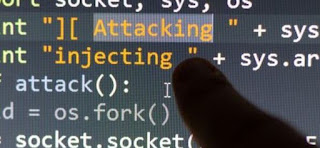Malicious SolarWinds binaries related applications are now blocked by Microsoft AV
Malicious SolarWinds binaries related applications are now blocked by Microsoft AV
As SolarWinds investigates the possibility of more CISOs infecting updates using the Orion Network Management Suite, Microsoft began blocking applications this morning with malicious SolarWinds binaries, a move that led to other software, servers and PCs A headache may occur.
Microsoft Defender Antivirus is now quarantining those malicious binaries, even when the process is running. "We also feel that this is a server product running in a customer environment," Microsoft said in a recent blog post. The company stated, "Removing the product from service may not be easy. Nevertheless, Microsoft recommends that customers isolate and test these tools.
Specific recommendations include:
Immediately disassemble the affected device. If malicious code is launched, it is likely that the device is under full attacker control.
Identifying accounts used on affected devices and considering tampering with these accounts. Reset password or demote accounts.
Investigations are being conducted as to how the affected endpoint may be compromised.
Examining device timelines for indication of lateral movement activities using one of the compromised accounts. Check for additional tools that attackers can drop to enable credential access, lateral movement, and other attack activities.
If a service interruption is not possible, Microsoft said, its customers should work to exclude SolarWinds binaries. This should be a temporary change that you should return as soon as possible because Orion is updated with a fix from SolarWind or an investigation is completed.
However, Ed Dubrovsky, managing Toronto-based event response firm Cytelligence, urged organizations with Orion not to discontinue their network's monitoring capabilities. "At a time when cyber attacks are at an epidemic level, you don't want to be blind. However, implement some controls around what Orion is allowed to do and communicate. " which consists of:
Ensure which domains the backdoor is calling for, and block them. There are a lot of articles that speak about the technical aspect of vulnerability.
Patching software and monitoring for additional patches that will likely be released soon.
Starting an investigation earlier this year to assess whether your organization was truly compromised and whether any other persistence mechanisms were established or whether lateral movement could be identified. If any signs of infiltration are identified, engage a DFIR firm to assess the damage and preserve artifacts.
On Tuesday, the second hotfix for Orion was released between March and June to allow the installation of the backdoor, after the company accepted the creation of Orion software for 2019.4 versions through 2019.4 during the weekend Can go The company has a FAQ page here.
SolarWinds estimates that 33,000 customers using less than 18,000 have installed a bad update. News reports also suggested that a very small number of exploits were made by malware makers. However, the victims are believed to involve some US government departments and major companies such as cyber security firm FireEye.
Microsoft sorb malware. FireEye called it Sunburst and released a detailed test of how it is exploited.
The Canadian Cyber Security Center urges CISOs to follow the following FireEye advice: Ensure that SolarWind servers are isolated and encapsulated until further review and investigation. This should include blocking all Internet from the SolarWinds server.
If the infrastructure of SolarWinds is not isolated, consider taking the following steps:
Limit the scope of connectivity from solarwind servers to endpoints specifically, which would be considered Tier 0 / Crown Jewel assets
Restrict the scope of accounts that have local administrators who have privileges on the SolarWinds server.
Block the Internet from servers or other endpoints.
Consider at least changing passwords for accounts that have access to SolarWinds servers / infrastructure. Depending on further review / investigation, additional remedial measures may be required.
If SolarWinds is used for networked networking infrastructure, consider reviewing the network device configuration for unexpected / unauthorized modifications. Note that this is an active measure due to the scope of solar investigation, which is not based on exploratory findings.
According to ZDNet, Microsoft, FireEye and GoDaddy seized and closed the domains used by the malware to communicate with a command and control server. It prevents attackers from using that domain to communicate with the infected server. In a statement FireEye called it a murder. "Depending on the IP address when the malware resolves avswmcloud [.]. Com, under certain conditions, the malware will terminate itself and prevent further execution."
The SANS Institute also said that for CISOs
Lessons are
Those running any network management system, including making sure that you're not using domain accounts where non-essential, and that services can only access essential components, including the Internet Involves restricting the use only where explicitly required.
Meanwhile, the Washington Post ran a story asking why the US government's Wanted Einstein intrusion detection platform did not face exploitation. Einstein is run by the Department of Homeland Security and the Cyber Infrastructure Security Agency (CISA). The story states that agency officials told congressional employees on Monday that the system did not have the ability to flag malware that was signaling back to its owner.
Additionally, security vendor Volexity recalled his work to fight an unnamed American bomber. The think tank used Orion which can shed more light. Volexity worked on three different incidents involving a group known as Dark Halo. In the initial incident, Volexity received multiple devices, backdoor and malware implants that had allowed the attacker to remain undetermined for many years. After being removed from the network, Dark Halo then returned for a second time, exploiting the vulnerability in the organization's Microsoft Exchange Control Panel. After the end of the incident, Volexity reported threats using a novel technique to bypass Duo Multi-Factor Authentication (MFA) to access a user's mailbox through the organization's Outlook Web App (OWA) service. Saw the actor. Finally, in a third incident, Dark Halo breached the organization through its SolarWinds Orion software in June and July of this year.







No comments